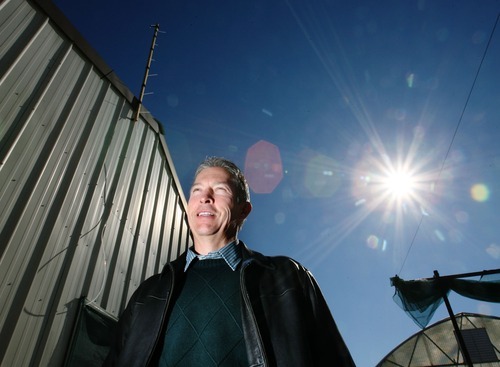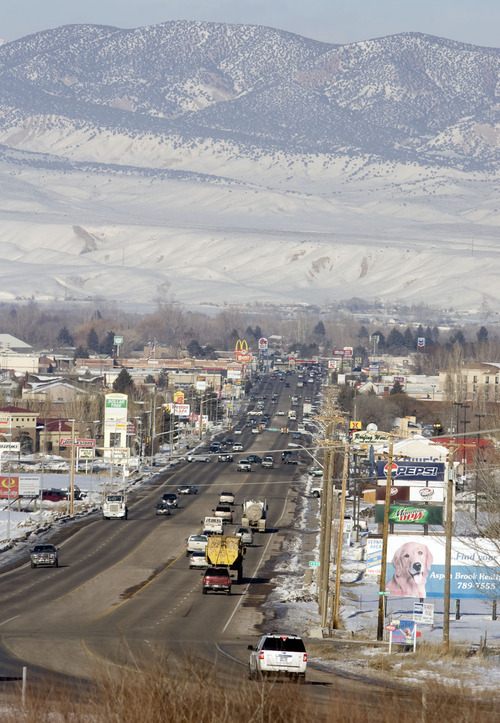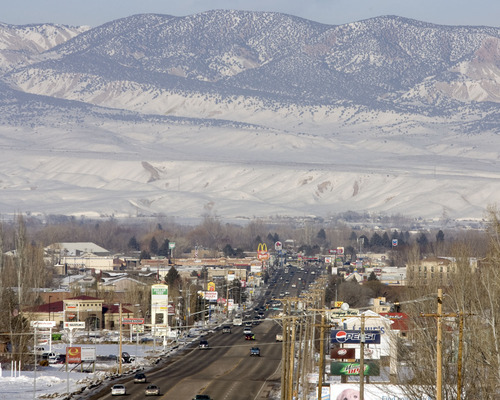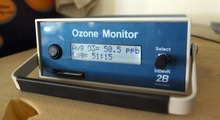This is an archived article that was published on sltrib.com in 2011, and information in the article may be outdated. It is provided only for personal research purposes and may not be reprinted.
Vernal • Sunshine here makes the snowy landscape glow.
Turns out, the same ultraviolet rays that show off the rare beauty of these wide-open spaces also play a startling role in transforming the Uinta Basin into a wintertime factory for ozone pollution.
Just why this happens is a puzzle smog scientists at Utah State University and the Idaho National Laboratory are trying to solve.
"There's a lot of things it could be," said Scott C. Hill, the project's leader for USU's Energy Dynamics Laboratory and an expert in untangling the quirky chemistry of air pollution.
What the science team hopes is its $160,000 study will show more clearly why so much ozone pollution builds up in the basin sometimes during the winter months.
Last year, the pollution was so bad at times that the basin had close to the highest ozone levels recorded anywhere in the United States — even worse than big cities like Los Angeles and Houston.
In Salt Lake City and other urban areas, ozone is a summertime problem.
Here, in the basin, it's the opposite: Ozone is a wintertime problem — a serious one.
—
Unhealthy air • Last year, ozone levels reached 123 parts per billion, according to the U.S. Environmental Protection Agency. That's significantly higher than what EPA calls "unhealthy" — 75 ppb — and worse than even the worst ozone day in the Salt Lake Valley last summer, when ozone hit 91 ppb.
Uinta Basin pollution also dug in longer. Unhealthy smog levels were recorded on 40 days last winter in the basin, compared with Salt Lake City, which had just three last summer.
Scientists know that weather and geography play big roles in ozone everywhere, and the Uinta Basin is no different. Strong ultra-violet radiation is a factor.
But in the basin, snow also has a big role, since it reflects sunshine energy back into the air. And, combined with high-pressure, the sun and snow turn the basin into a kind of huge, covered mixing bowl that seals out cleansing winds and precipitation.
This winter's study is slated to monitor weather conditions — temperature, relative humidity and other factors — from the end of December through March. It also logs ozone readings every few minutes at 10 locations. And Monday, intensive monitoring will begin to get even more in-depth data.
As for the source of nitrogen oxides and VOC's — Hill's team is focused on measuring their levels, not trying to pinpoint their source. So this year's study is not expected to point fingers at either the usual suspects like exhaust from vehicles and power plants or conditions unique to the basin, like the oil and gas industry.
Kathleen Sgamma, spokeswoman for the Western Energy Alliance representing 400 energy companies, said the new data will add to the skimpy knowledge base about Uinta Basin ozone, which industry itself has been studying for years.
"We feel we have been trying to do our part with science and reducing emissions," she said. "We certainly want to develop domestic energy in the basin while protecting air quality."
—
Stall tactics? • David Garbett, an attorney for the Southern Utah Wilderness Alliance who has been watching the ozone problem in the basin for years, questioned the need for leaders to wait for answers from a study that is likely to take years.
He noted that Pinedale, Wyo. — the first place where wintertime ozone pollution was recognized as a serious problem and a place with geography, weather and industry much like the Uinta Basin's — already has been successful in reducing ozone by cutting emissions from oil and gas development.
"We know for certain that oil and gas development involves the precursors," he said. "A reasonable mind would think this [industry] is one of the first things we should think of" as a cause.
But officials at the EPA's Denver office say they want to wait for more information before they act.
"Before you can find the appropriate control measures or response measures," said Carl Daly, who oversees air permitting, modeling and permitting in the EPA's Denver office, "you need to define the problem."
At least some in the community question whether the study is tilted against finding the energy industry to blame, or whether, in the end, it will make any difference in fixing the problem.
The reason: Funding for the study was provided by the Uintah Impact Mitigation Special Service District, which relies on millions of dollars in federal mineral-lease funds for its budget. And if the pollution exceeds EPA limits for three years in a row, the basin's businesses and residents could face new ozone controls, including restricted development.
—
Just the facts • Uintah County Commissioner Mike McKee said any suggestion that the fix is in should be debunked.
"The oil and gas industry has no say in it whatsoever," he said.
McKee insisted the goal is to see what's going on in the basin. Is the pollution blowing in from the Wasatch Front or L.A? Is it from wood-burning stoves?
"There's so much information we need to get," he said.
From Hill's perspective, the information gathered during this and future studies will someday suggest what decision-makers should do, what ozone ingredient they can tamper with, to help clear the smog in the basin.
"From this study we'll get a baseline of the ozone in the basin," said Hill. "From that, we can look at what questions we need to look at next."
fahys@sltrib.com Why the mystery?
Unrelated to the well-publicized ozone hole in the upper atmosphere, ground-level ozone is not a pollutant that spews from a tailpipe or factory smokestack.
It is created when ultraviolet light interacts with "precursor" pollutants, the nitrogen oxides that are generally associated with combustion engines and the volatile organic compounds from solvents and paints.









